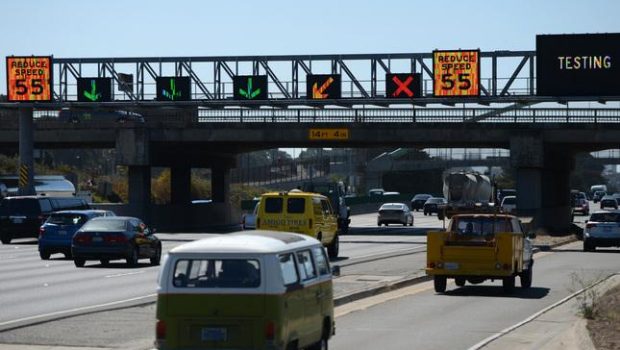I-80 flow technology is flawed, driver asserts
Q: In my view, the high-tech technology used to keep traffic flowing on Interstate 80 has been very disappointing.
John Winters, Oakland
A: This is where Caltrans posts warning signs that may lower the speed limit for a problem ahead. It may also put up a red X to close a lane blocked ahead by a stall, fender bender or major crash. The warning signs can reduce speed limits to as low as 30 mph to get drivers to slow to a speed that is safe for conditions.
A similar system is in place on Highway 101 from south of San Francisco to the Palo Alto area, and can include advisory signs about what alternate routes are available, such as El Camino Real instead of 101.
Q: I assumed the system would turn on automatically during commute hours to regulate overall flow. However, it seems as though it only is activated after a specific incident occurs.
John Winters
A: That is the case. Tell us more.
Q: When activated, lighted signage might show that a lane is blocked ahead and recommend a reduced speed. However, it always seems the recommended speed is 30 mph, usually faster than traffic is actually moving. The one time I saw a speed posted that was lower than 30 mph, traffic was moving even slower. I imagined more dynamic, fluid speed limit ranges, since the theory is that all cars traveling at a slower speed moves everyone along smoothly while maintaining capacity.
John Winters
A: Studies show that traffic can move more efficiently at 30 mph when it is possible to travel that speed than if the recommended speed were reduced beyond that. As you note, the posted speed is sometimes higher than what vehicles can travel at that time, on that section of the road.
Q: Lane blockage markings are sometimes useful, but typically if one moves out of a blocked lane marked with a red X, it has just opened up and the jackrabbits push their way up the line to merge in far ahead of their original place in line. With COVID speed lunatics, this situation is only exacerbated.
John Winters
A: And …
Q: Has there been any other feedback on the program?
John Winters
A: A little. Caltrans says rear-end crashes have been reduced.
The operations are dynamic. Recommended speeds are based on downstream average vehicle speeds collected by vehicle detection stations. The primary intent is for drivers to slow down as they approach a crash to aid with orderly clearance of the road.
A car stalled on a freeway for just three minutes before being moved off the road can contribute to a 30-minute backup.
Look for Gary Richards at Facebook.com/mr.roadshow, or contact him at mrroadshow@bayareanewsgroup.com or 408-920-5335.








Gloss